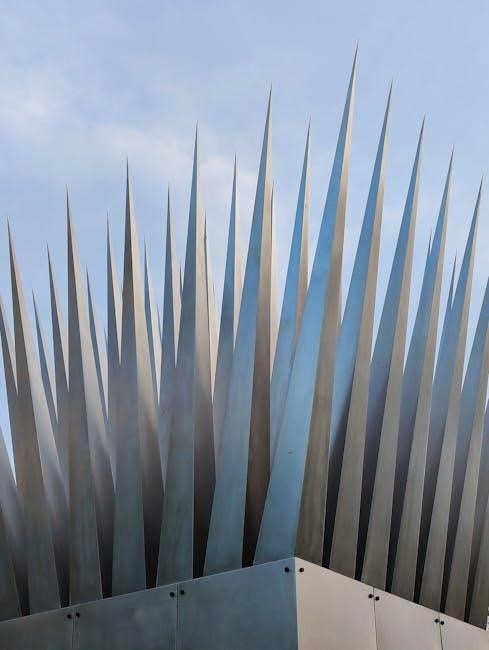Vertical metal siding offers a modern, durable solution for exterior walls, combining sleek aesthetics with robust weather resistance. Easy to install with proper tools and techniques, it provides long-lasting protection and enhances curb appeal. This guide covers essential steps, tips, and best practices for a successful installation.
1.1 What is Vertical Metal Siding?
Vertical metal siding is a type of exterior cladding made from metal panels installed vertically on walls. It is known for its durability, weather resistance, and modern aesthetic appeal. Typically made from materials like steel or aluminum, these panels are designed to withstand harsh weather conditions and require minimal maintenance. Vertical metal siding is available in various styles, including ribbed, corrugated, and smooth finishes, offering flexibility in design. It is also fire-resistant and can be insulated for energy efficiency. This siding option is popular for both residential and commercial buildings due to its strength, longevity, and ability to enhance curb appeal effectively.
1.2 Benefits of Vertical Metal Siding
Vertical metal siding offers numerous benefits, including exceptional durability, low maintenance, and resistance to weather, pests, and fire. Its sleek, modern design enhances curb appeal while providing long-lasting protection for exterior walls. Metal siding is lightweight yet robust, making it ideal for various climates. It is also energy-efficient, as it can be insulated to reduce heat transfer. Additionally, vertical metal siding is eco-friendly, as it is often made from recyclable materials. Its resistance to mold, mildew, and rot further reduces the need for frequent repairs. Overall, it is a cost-effective and sustainable choice for homeowners seeking a durable and attractive siding solution.
1.3 Why Choose Vertical Metal Siding?
Vertical metal siding is a top choice for homeowners and builders due to its versatility, durability, and aesthetic appeal. It offers a modern look that complements various architectural styles while providing superior protection against harsh weather conditions. Unlike traditional siding materials, metal siding is resistant to warping, cracking, and pest damage, ensuring a long lifespan. Its vertical design allows for easy water runoff, reducing the risk of moisture-related issues. Additionally, metal siding is fire-resistant and eco-friendly, making it a safe and sustainable option. With minimal maintenance required, it is an excellent investment for those seeking a reliable and stylish exterior solution.
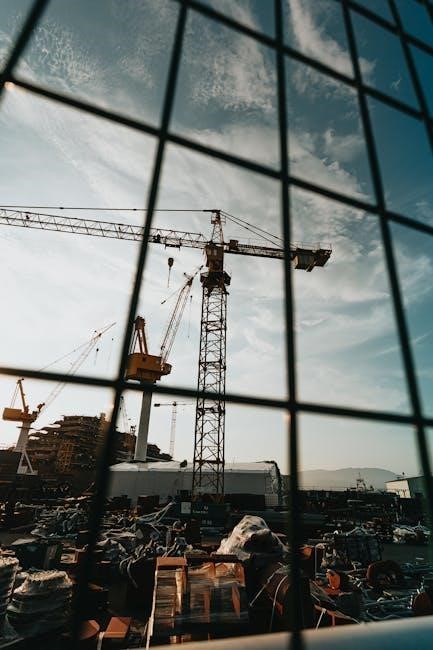
Tools and Materials Needed
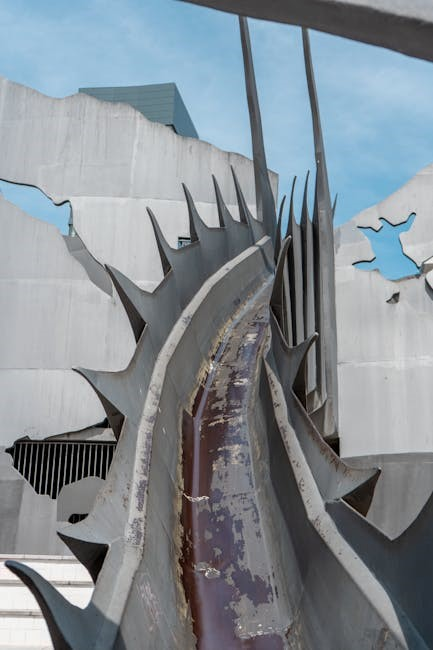
Essential tools include a drill, impact driver, measuring tape, level, and utility knife. Materials needed are metal panels, screws, weatherproofing materials, and sealants for secure installation.
2.1 Essential Tools for Installation
The essential tools for installing vertical metal siding include a drill, impact driver, measuring tape, level, utility knife, and screwdrivers. Safety gear like gloves and safety glasses is crucial. Additional tools such as a chalk line, pencil, and ladder are necessary for accurate measurements and reaching heights. A saw or metal cutter may be needed for cutting panels to size. Weatherproofing materials and sealants are also required to ensure a watertight installation. Proper tools ensure efficiency and safety during the installation process, helping to achieve professional-grade results.
2.2 Required Materials for Vertical Metal Siding
Key materials for vertical metal siding include high-quality metal panels, durable fasteners, and weatherproofing components. Flashing is essential for sealing openings, while starter trim and battens provide structural support. Sealants and caulks ensure watertight joints, and finishing caps complete the installation. Additional materials like underlayment and insulation may be needed for enhanced performance. Proper selection of materials ensures longevity and protection against environmental factors, making the siding both functional and visually appealing. Always choose materials compatible with your climate and building codes to guarantee a successful installation.
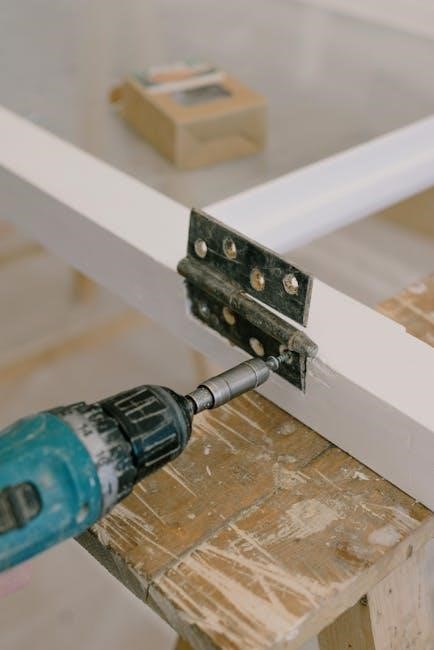
Preparation for Installation
Preparation involves checking local codes, ensuring safety, cleaning the wall, and inspecting for damage. Proper site readiness ensures a smooth installation process.
3.1 Site Preparation and Safety Measures
Site preparation involves clearing the area, removing debris, and ensuring a clean workspace. Safety measures include wearing protective gear like gloves, safety glasses, and a hard hat. Inspect the wall for damage or rot and address issues before installation. Ensure proper scaffolding is in place for safe access to heights. Verify all power tools are in good condition and keep materials organized to prevent tripping hazards. Check local building codes and regulations to ensure compliance. Proper preparation and safety protocols are essential for a successful and injury-free installation process.
3.2 Checking Local Building Codes and Regulations
Before starting installation, consult local building codes and regulations to ensure compliance. Vertical metal siding must meet fire, structural, and environmental standards. Verify requirements for materials, fastening methods, and insulation. Obtain necessary permits and approvals. Ensure compliance with zoning laws and neighborhood covenants; Failure to adhere to regulations may result in fines or removal of the siding. Always check with local authorities for specific guidelines, as requirements vary by region. Proper compliance ensures a safe and legally sound installation process.
3.3 Measuring the Wall Area for Siding
Accurately measure the wall area to determine the amount of siding needed. Measure each wall section separately, noting heights and widths. Account for doors, windows, and other openings. Use a tape measure to record dimensions precisely. Calculate the total square footage by multiplying height and width for each section. Add 10% to the total for waste and cuts. Use a calculator to ensure accuracy. Proper measurement ensures the correct amount of materials and avoids delays. Double-check measurements to confirm accuracy before ordering or cutting panels. This step is crucial for a smooth and efficient installation process.
Installing Vertical Metal Siding Panels
Begin with starter trim, ensuring proper alignment. Mount the first panel securely, then align subsequent panels, locking them in place. Cut panels as needed for a seamless fit.
4.1 How to Install Starter Trim
Begin by positioning the starter trim along the base of the wall, ensuring it is level and plumb. Secure it with compatible fasteners, spaced evenly for stability. Align the trim with the wall’s edge, leaving a slight gap for expansion. Double-check the alignment before fastening to ensure accuracy. Once installed, the starter trim provides a solid foundation for attaching the first siding panel, maintaining proper alignment throughout the installation process. Properly securing the starter trim is crucial for a successful and visually appealing siding installation. Follow manufacturer guidelines for specific fastening recommendations and spacing requirements.
4.2 Mounting the First Panel
Align the first panel with the starter trim, ensuring it fits snugly and evenly. Begin at the bottom of the wall to maintain proper alignment. Use compatible fasteners to secure the panel to the studs or framing, spacing them according to the manufacturer’s recommendations. Tighten the fasteners firmly but avoid overtightening, which could damage the panel. Check that the panel is level and plumb before fully securing it. Once the first panel is correctly mounted, it sets the foundation for the rest of the installation, ensuring all subsequent panels align properly. Always follow the manufacturer’s guidelines for fastening patterns and torque specifications.
4.3 Aligning and Securing Subsequent Panels
After mounting the first panel, align subsequent panels by matching the vertical grooves or seams with the previous panel. Ensure each panel is level and plumb before securing it. Use compatible fasteners, spacing them evenly as recommended by the manufacturer. Start from the bottom and work upward to maintain proper alignment. Gently tap panels into place to avoid bending or misaligning. Double-check that each panel fits snugly against the starter trim and adjacent panels. Secure the panels firmly but avoid overtightening, which could cause damage. Proper alignment ensures a seamless appearance and prevents water infiltration or structural issues down the line.

4;4 Cutting Panels to Fit Specific Areas
Cutting vertical metal siding panels requires precision to ensure proper fitment. Use a circular saw with a metal-cutting blade or tin snips for straight cuts. For curved or irregular cuts, a jigsaw or utility knife may be necessary. Always measure twice before cutting to avoid waste. Wear safety gloves and eyewear to protect against sharp edges and debris. When cutting, place the panel on a stable surface and use a straightedge as a guide. For notches or openings, mark the area carefully and cut slowly to maintain accuracy. Properly fitting panels around windows, doors, and corners ensures a professional finish.

Flashing and Weatherproofing
Flashing and weatherproofing are critical steps to prevent water infiltration and ensure long-term durability. Properly installed flashing around openings and sealed gaps maintain a watertight and weather-resistant exterior.
5.1 Installing Flashing Around Openings
Installing flashing around openings like windows, doors, and vents is essential to prevent water infiltration. Use durable, weather-resistant materials to create a watertight seal. Apply waterproof sealant or adhesive-backed flashing tape around the perimeter of the opening. Ensure the flashing is securely fastened to the wall, overlapping edges for maximum protection. Align the flashing with the siding panels to maintain a seamless appearance. Proper installation ensures that water runs off without penetrating the structure, safeguarding the integrity of the building. Follow manufacturer guidelines for specific flashing products to guarantee optimal performance and longevity of the vertical metal siding system.
5.2 Sealing Gaps and Joints
Sealing gaps and joints is critical to ensure the vertical metal siding system remains watertight and energy-efficient. Use high-quality, weatherproof sealants or silicone-based products to fill any gaps between panels, trim, and flashing. Apply the sealant evenly, ensuring complete coverage without overfilling. Properly align panels to minimize gaps, and seal any unavoidable joints immediately after installation. Regularly inspect and reseal gaps as needed, especially in areas exposed to harsh weather conditions. This step prevents water infiltration, reduces air leaks, and maintains the structural integrity of the siding. Follow manufacturer instructions for the best results and longevity of the sealant.
5.3 Ensuring Weatherproofing
Ensuring weatherproofing is essential to protect your vertical metal siding from water damage and air leaks. Start by installing flashing around all openings, such as windows, doors, and vents, to direct water away from the structure. Use waterproof sealants or silicone-based products to seal gaps and joints, ensuring a tight barrier against moisture. Regularly inspect the siding for any signs of wear or damage, addressing issues promptly to maintain its weatherproofing capabilities. Additionally, ensure proper alignment of panels and secure fastening to prevent gaps that could compromise the system. Weatherproofing is a critical step to ensure the longevity and performance of your vertical metal siding.
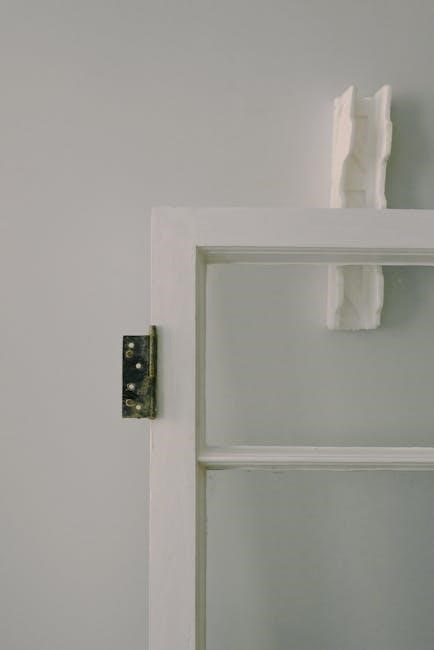
Finishing Touches
Install battens and caps to cover edges and joints, ensuring a polished appearance. Conduct a final inspection to verify all panels are secure and properly aligned.
6.1 Installing Battens and Caps
Battens and caps are essential for finishing vertical metal siding. Start by measuring and cutting battens to fit along panel edges and joints. Secure them using compatible fasteners, ensuring they align perfectly with the panels. Next, install caps over the battens to create a seamless look. Use a level to ensure straight alignment and a rubber mallet to tap them into place gently. Properly sealing the caps with weatherproof adhesive prevents moisture infiltration. This step enhances both the structural integrity and visual appeal of the siding, providing a professional and polished finish to the installation.
6.2 Final Inspection and Adjustments
After installing vertical metal siding, conduct a thorough inspection to ensure all panels are securely fastened and properly aligned. Check for any gaps, loose fasteners, or misaligned battens. Use a level to verify the panels are straight and plumb. Make adjustments by tightening loose screws or repositioning panels as needed. Inspect flashing and weatherproofing for integrity, ensuring no gaps remain. Address any issues promptly to maintain the siding’s durability and appearance. Once satisfied, perform a final walk-through to confirm the installation meets your standards, resulting in a polished and professional finish.
Common Mistakes to Avoid
Common errors include improper measurements, insufficient fastening, and poor panel alignment. Neglecting weatherproofing and ignoring manufacturer instructions can lead to installation failures and reduced siding longevity.
7.1 Improper Measurement and Cutting
Improper measurement and cutting are common mistakes that can lead to poorly fitting panels and wasted materials. Always double-check measurements before cutting to ensure accuracy. Use a laser level or straightedge to mark cuts clearly. Rushing this step often results in uneven edges or misaligned panels. Consider creating a template for repetitive cuts to maintain consistency. Additionally, account for expansion and contraction due to temperature changes by leaving slight gaps. Proper tools, like a saw or metal shear, are essential for clean cuts. Taking the time to plan and measure carefully will prevent costly errors and ensure a professional finish.
7.2 Insufficient Fastening
Insufficient fastening is a critical error that can compromise the structural integrity of vertical metal siding. Panels must be securely fastened to withstand wind, rain, and temperature fluctuations. Using too few fasteners or spacing them too far apart can lead to loose panels, buckling, or even detachment. Always follow manufacturer guidelines for fastener type, quantity, and spacing. Ensure screws are driven straight and snug to avoid over-tightening, which can damage the panels. Proper fastening ensures a tight seal, prevents moisture infiltration, and maintains the siding’s appearance. Double-checking fastener placement during installation is essential for long-term durability and performance.
7.3 Poor Alignment of Panels
Poor alignment of vertical metal siding panels can lead to a variety of issues, including water infiltration, uneven appearance, and structural weakness. Misaligned panels create gaps and uneven surfaces, compromising the siding’s weatherproofing and aesthetic appeal. To avoid this, ensure panels are installed level and plumb, using a spirit level and proper alignment tools; Start with a straight reference line and double-check each panel’s position before securing it. Misalignment often occurs due to rushed installation or improper use of fasteners. Taking the time to align panels correctly ensures a professional finish, prevents long-term damage, and maintains the siding’s integrity. Proper alignment is key to a successful installation.
Maintenance and Repair
Regular cleaning prevents dirt buildup. Inspect for dents and scratches. Repaint as needed to maintain appearance and protect metal. Address issues promptly to ensure longevity.
8.1 Regular Maintenance Tips
Regular maintenance ensures vertical metal siding remains durable and visually appealing. Clean the siding annually with mild detergent and water to remove dirt and grime. Inspect for scratches, dents, or rust spots and touch them up promptly. Check fasteners and tighten any loose ones to prevent water infiltration. Trim nearby vegetation to avoid damage from branches. Avoid using harsh chemicals or abrasive cleaners, as they can damage the finish. Schedule professional inspections every few years to address any hidden issues. Consistent upkeep extends the siding’s lifespan and maintains its protective qualities.
8.2 Repairing Damaged Panels
Repairing damaged vertical metal siding panels is crucial to maintain structural integrity and appearance. Start by assessing the damage to determine if a panel can be repaired or needs replacement. For minor dents or scratches, use a metal repair kit to smooth out imperfections. If a panel is severely damaged, remove it by taking out the fasteners and gently lifting it away. Replace it with a new panel, ensuring proper alignment and secure fastening. Seal any gaps with weatherproof sealant to prevent water intrusion. Touch up the repaired area with matching paint to maintain a uniform look.
8.4 Cleaning and Preserving the Siding
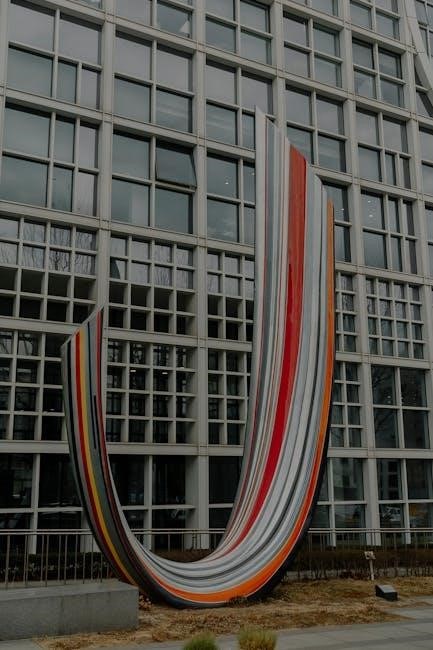
Regular cleaning is essential to maintain the appearance and durability of vertical metal siding. Use a mild detergent solution and a soft cloth or brush to remove dirt, grime, and mildew. Avoid harsh chemicals, abrasive materials, or high-pressure washes, as they may damage the finish. Rinse thoroughly with clean water to prevent soap residue. For stubborn stains, mix baking soda and water to create a gentle paste, apply it, and rinse after 10 minutes. Regular cleaning prevents corrosion and ensures the siding remains weatherproof. Inspect for damage during cleaning and address issues promptly to maintain its protective and aesthetic qualities.
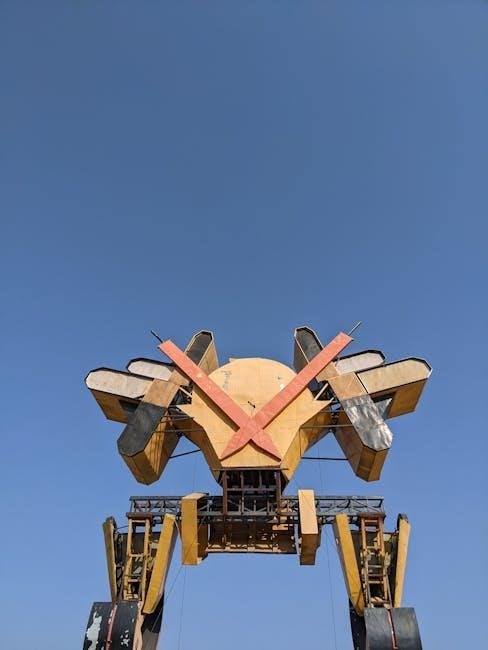
Safety Considerations
Ensure safety by wearing protective gear like gloves and safety glasses. Use sturdy ladders and scaffolding when working at heights. Handle sharp metal edges with care.
9.1 Safety Gear and Equipment
Essential safety gear includes safety glasses, steel-toe boots, and puncture-resistant gloves to protect against sharp metal edges. A dust mask is recommended for cutting or drilling. Use a hard hat if working under overhead obstructions. Ensure ladders and scaffolding are secure and level to prevent falls. Always maintain three points of contact when climbing. Proper lifting techniques are crucial to avoid strains. Keep a first aid kit nearby and ensure someone is trained in its use. Regularly inspect equipment for damage. Following these safety practices helps prevent common injuries and ensures a secure working environment during installation.
9.2 Working at Heights Safely
When working at heights, always use a harness and ensure it is securely attached to a stable anchor point. Ladders and scaffolding must be properly set up on level ground and regularly inspected for damage. Maintain three points of contact (two hands and one foot, or two feet and one hand) when climbing. Never lean over the side of a ladder; instead, move it to the desired position. Use safety nets or fall arrest systems for added protection. Ensure a spotter is present to monitor the area. Proper training and adherence to local safety regulations are essential to minimize risks and prevent accidents.
9.3 Handling Sharp Materials
When handling sharp materials like metal siding panels or cutting tools, always wear protective gloves and safety glasses to prevent injuries. Use proper lifting techniques to avoid strains. Store sharp objects in secure, dry areas out of reach of children. Dispose of scrap metal and packaging responsibly. Ensure tools are well-maintained to prevent accidental cuts. Keep work areas clean to avoid tripping hazards. Use push sticks or other safety aids when cutting materials with power tools. Never leave sharp edges exposed; file or grind them smooth. Regularly inspect tools and materials for damage. Proper handling reduces risks and ensures a safer working environment.
Vertical metal siding installation is a rewarding project offering durability and modern aesthetics. By following this guide, you can achieve professional results with confidence and safety.
10.1 Summary of Key Steps
Installing vertical metal siding involves several critical steps, starting with proper preparation and measurement. Ensure the site is safe and compliant with local codes. Begin by installing starter trim, then mount the first panel securely. Align subsequent panels carefully, using fasteners to prevent gaps. Cut panels as needed for precise fits around openings. Flashing and sealing are essential for weatherproofing. Finish with battens and caps for a polished look. Regular maintenance and inspections will extend the siding’s lifespan. By following these steps and avoiding common mistakes, you can achieve a professional, durable, and visually appealing vertical metal siding installation.
10.2 Final Thoughts on Vertical Metal Siding
Vertical metal siding is a practical and stylish choice for exterior walls, offering durability, low maintenance, and a modern aesthetic. With proper installation and care, it provides long-lasting protection against the elements. The process, while requiring attention to detail, is achievable for DIY enthusiasts and professionals alike. By following the steps outlined in this guide, you can ensure a successful installation that enhances your property’s curb appeal and value. Remember, regular maintenance is key to preserving its appearance and functionality. Take pride in your work, knowing you’ve invested in a high-quality, enduring solution for your home or building.
Additional Resources
Explore MBCI’s installation manuals, YouTube tutorials, and downloadable guides for detailed insights and expert tips on vertical metal siding installation and maintenance.
11.1 Recommended Tools and Suppliers
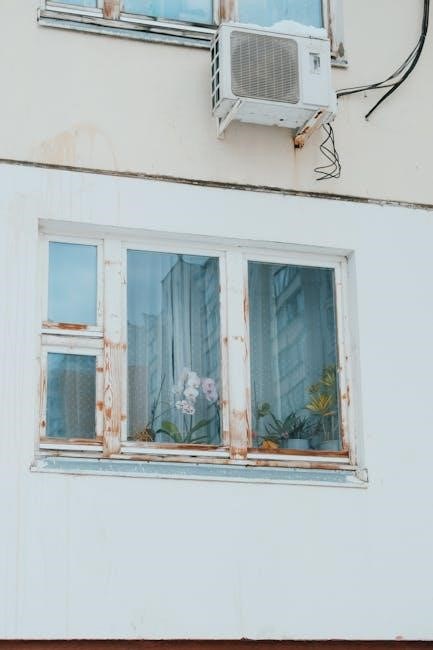
For a successful vertical metal siding installation, use high-quality tools like metal shears, drills, and fasteners. MBCI is a trusted supplier for metal panels and accessories. Additionally, consider purchasing tools from reputable hardware stores or online retailers. Ensure all materials meet local building standards for durability and safety. Proper tools and suppliers are essential for a professional finish and long-lasting results.
11.2 Further Reading and Tutorials
For in-depth guidance, explore MBCI’s installation manuals and technical resources. Video tutorials on platforms like YouTube offer step-by-step demonstrations for vertical metal siding installation. Additionally, blogs and forums share expert tips for layout, panel alignment, and troubleshooting common issues. These resources complement this guide, providing visual and hands-on insights. Whether you’re a DIY enthusiast or a professional, these materials ensure a smooth and successful project. Always refer to manufacturer instructions for specific product recommendations and safety protocols. Further reading enhances your knowledge and confidence in achieving a professional-grade installation.
